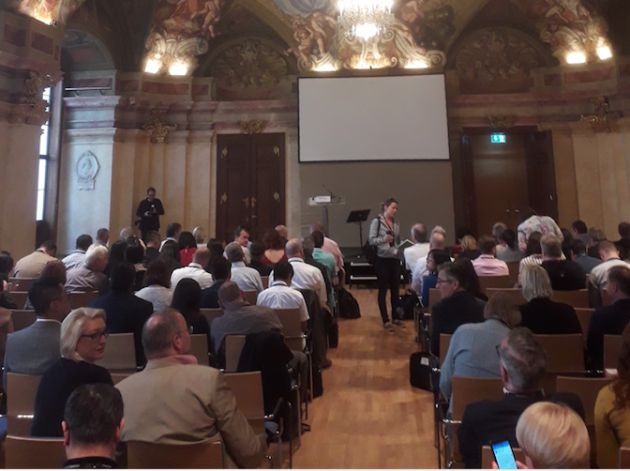
Austria enters ‘golden’ period
Willi Klinger MW, the managing director of the Austrian Wine Marketing Board (AWMB), has predicted that his country’s wine exports will continue to rise at a similarly fast rate to the last few years.
Speaking at the Austrian Wine Summit in Vienna over the weekend, Klinger told journalists from around the world of his optimism that his country is now entering a "golden period", with its wines priced at encouragingly high levels.
The year 2018 saw exports of Austrian wine climb to an all-time high in terms of value: €170 million, with an average price of €3.24 per litre (up from 83 cents in 2003). Thanks to the data at his disposal, Klinger predicts exports will rise over 6% this year to €180 million, and to €227 million per annum by 2024.
Despite these promising forecasts, Klinger warned that average daily temperatures in the Austrian growing season, which have increased by 2 degrees Celsius since the 1980s, are expected to rise by another 1.4C by 2050 thanks to global warming. He predicted that two fungus-resistant varieties would increasingly be experimented with: Roesler and Rathay. With two-thirds of Austrian vineyards planted to white varietals, more such could include the likes of Blutenmuskateller, Muscaris, Souvignier Gris and Donauriesling.
Apart from the improved financial footing of the Austrian wine industry, Klinger has overseen a significant growth in the number of organically-farmed vineyards in the country. As much as 22% of Austria’s 46,573 hectares under vine - or 679 estates - are now certified organic. Many of those who are not have joined the ‘Sustainable Austria’ certification programme, which requires producers to embrace environmentally friendly packaging, GM free practices and social responsibility.
Few marketing bodies are so proactive as the AWMB, which flew in 197 wine journalists from 39 countries for the Austrian Wine Summit, which takes place every two years. They were told how the current tally of 13 DAC (Districtus Austriae Controllatus) appellations in Austria will shortly be increased by three, all of them in Steiermark. Up to another half dozen are in the pipeline, including Wachau, Carnuntum, Wagram and Thermenregion.
The successor to Klinger, who steps down at the end of 2019 from his role after 13 years at the helm of the AWMB, will come from a short-list of five candidates. The Board will announce their new appointment early next month. Whoever takes over the mantle will do well to emulate the Austrian wine industry’s advance under the Klinger, a talismanic extrovert who trained in his younger days to be an actor. Those talents have served him well since he took up his current post after six years as the marketing manager for the iconic Barbaresco producer, Gaja.
Klinger freely admits that the 1985 Austrian wine crisis, when glycol was found to have been added by some winemakers to their sweet wines, was a blessing in disguise for the country’s wine industry. The vast majority of wine made by it then was sweet, but the crisis, which led to a collapse in sales, obliged producers to opt predominantly for dry wines of premium quality.




